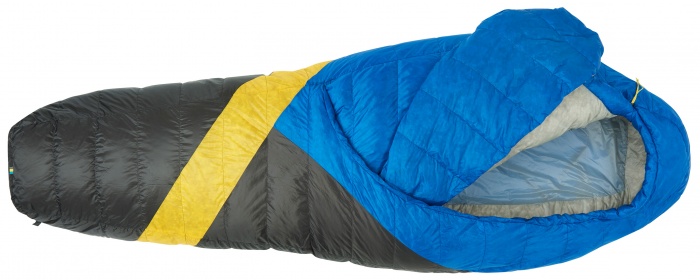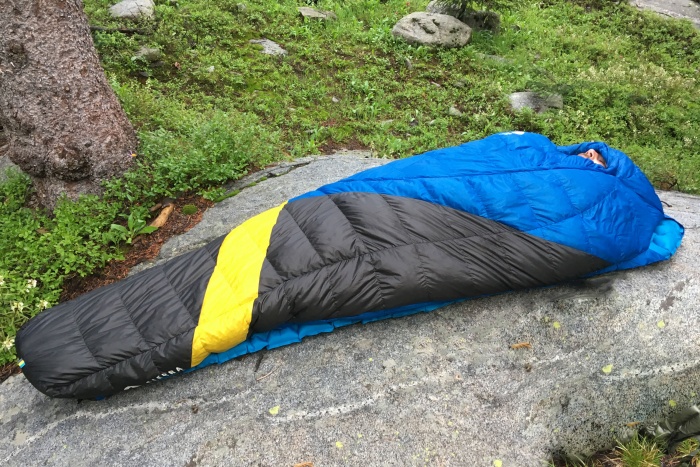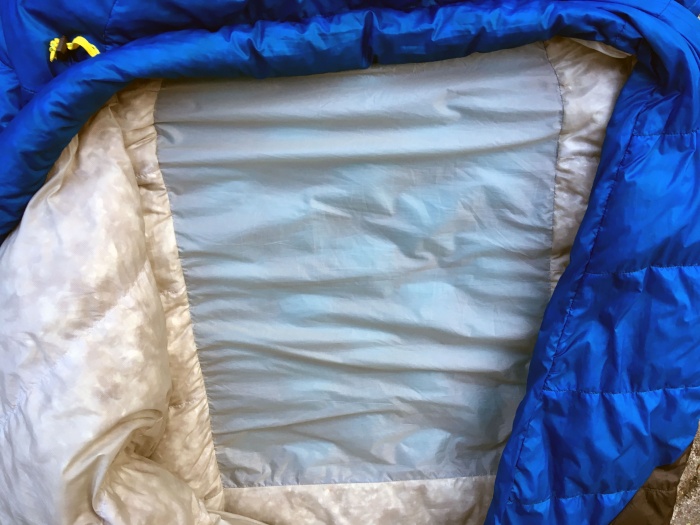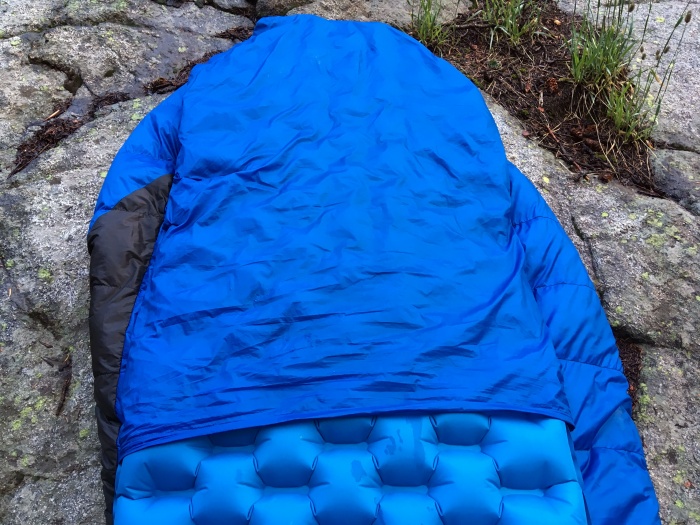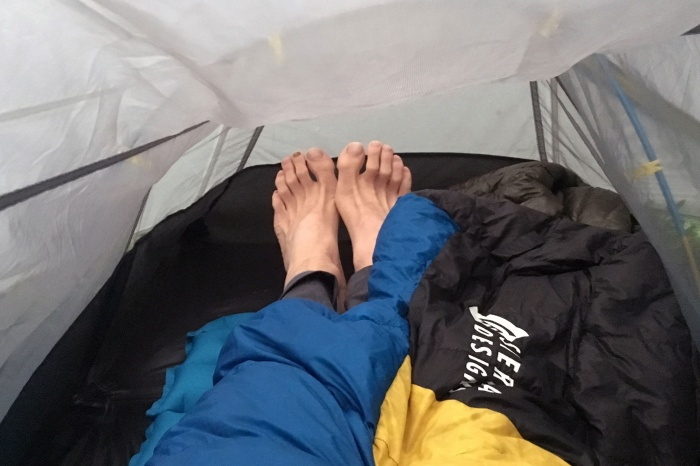Without any zipper to close off the 40-degree, rain-soaked chill outside, I slept comfortably, nestled cocoon-like in Sierra Designs’ cleverly tricked out sleeping bag.
I knew a trek along the Continental Divide at about 13,000 feet meant the nights would be cool. What I didn’t expect was soaking rain every evening and a nearly impossible task of staying warm.
So when Casey Sumnicht, Sierra Designs‘ Equipment Product Manager, handed me a 35-degree sleeping bag with no zipper, I was dubious. And when I opened the bag to see a large block of missing down fill at the back, I was sure I’d freeze.
But after two nights sleeping in the Rocky Mountains, with temps dipping below 40 degrees, I found the Cloud 35 proved to be a warm, comfortable bag. It even held a few surprises that made it especially comfortable.
In short: Sierra Designs‘ Cloud 35 is a lightweight, zipperless bag made to hold in heat without trapping you in a snug-fitting sack that bunches when you move. Its sleeping pad insert isn’t for everyone, but it has some upsides for side sleepers, and an integrated foot vent provides simple temperature regulation.
Sierra Designs Cloud 35 Sleeping Bag Features
Sierra designs wowed us four years ago with the first no-zip camp sleep system we had tried. With its 2018 line, the brand streamlines the Backcountry Bed we gave Best In Show for 2013. Whereas that was decidedly not a mummy, this definitely is.
First, the features. The Cloud has a conspicuously down-less patch on the rear, because that’s where your sleeping pad will be.
As Sumnicht told me, “The bag is meant to be used with a pad. Not only will that keep the ground from sucking away body heat, but your back would just crush that down anyway, so we simply moved the insulation to where it would do more good.”
You have two options with the sleeping pad: You can lay the bag on top of it, or use the integrated pad sleeve. I tried both.
The rest of the bag is stuffed with 800-fill water-repellant DriDown. I tested the 35-degree bag, but SD’s upcoming line has a 20-degree version that also has a women’s-specific fit.
I didn’t take a scale into the backcountry, but the listed weight of the bag is 1 lb. 7 oz., putting it on the svelte side of the 30-degree market, and about a half-pound lighter than the brand’s 30-degree Backcountry Bed.
A padded wraparound sleeve tucks beneath your shoulder to keep warm air from floating away. And a foot “escape hatch” lets you kick out your feet for simple temperature regulation.
Sierra Designs Cloud Sleeping Bag Review
The first night sleeping, I laid the bag on my sleeping pad (REI Flash Pad), but quickly learned why the bag accepts pads through its rear sleeve.
All bags bunch and twist to some degree as you move. But the Cloud’s overlapping quilt and shoulder pad will cinch and flop when you roll over. Unless, that is, you insert a sleeping pad. Again, Sumnicht:
“The pad actually gives the Cloud structure. When it’s inserted, you can move around during sleep and the bag won’t contort or change shape much.”
With the pad inserted, the bag really is more effective. I was able to move and sleep on my back, side, and even stomach (to some degree) comfortably.
At first use, it took some trying to tuck the shoulder flap under me before pulling the quilt over, but it became more intuitive. You naturally want to pull the bag shut around you, and it’s designed to work as such.
The foot vent is simple to use: As you put your feet into the bag, a top sleeve leads to a closed foot box. If you become too warm, pull your feet out—the sleeve is about 10-12 inches long—and slide them under.
Behind the foot box, the bag is open and you can kick your feet out to cool down. It’s not much, but does help should the bag become clammy.
Final Notes: Cloud 35 Test
The one feature I didn’t love was the hood. For one, our trip wasn’t so cold that I needed full coverage. But mostly, with my sleeping pad inserted, the hood just didn’t wrap around my head comfortably. Since it was no problem to rest behind my head, that’s what I did and earned a little extra pillow cushion for it.
The Sierra Designs Cloud 35 and 20 (with women’s fit) launches January 1, 2018. The 30-degree costs $270 for a regular and $290 for the long. The 20-degree bags will run $300-$320.
Overall, I can see the growing appeal of zipperless sleeping bags. The Cloud is a great option for those who are ounce-conscious, expecting chilly nights, and plan to use an insulated sleeping pad.


